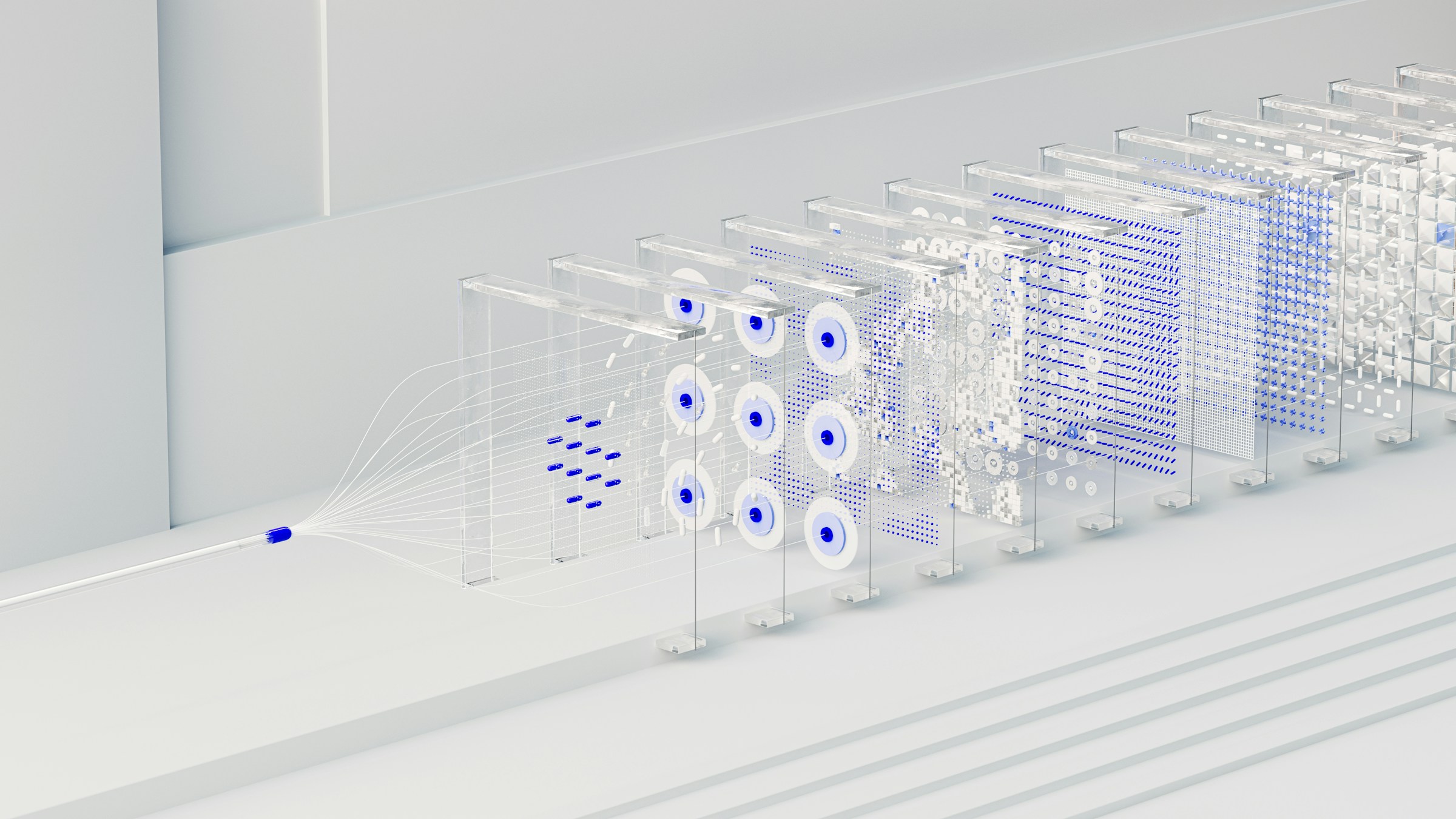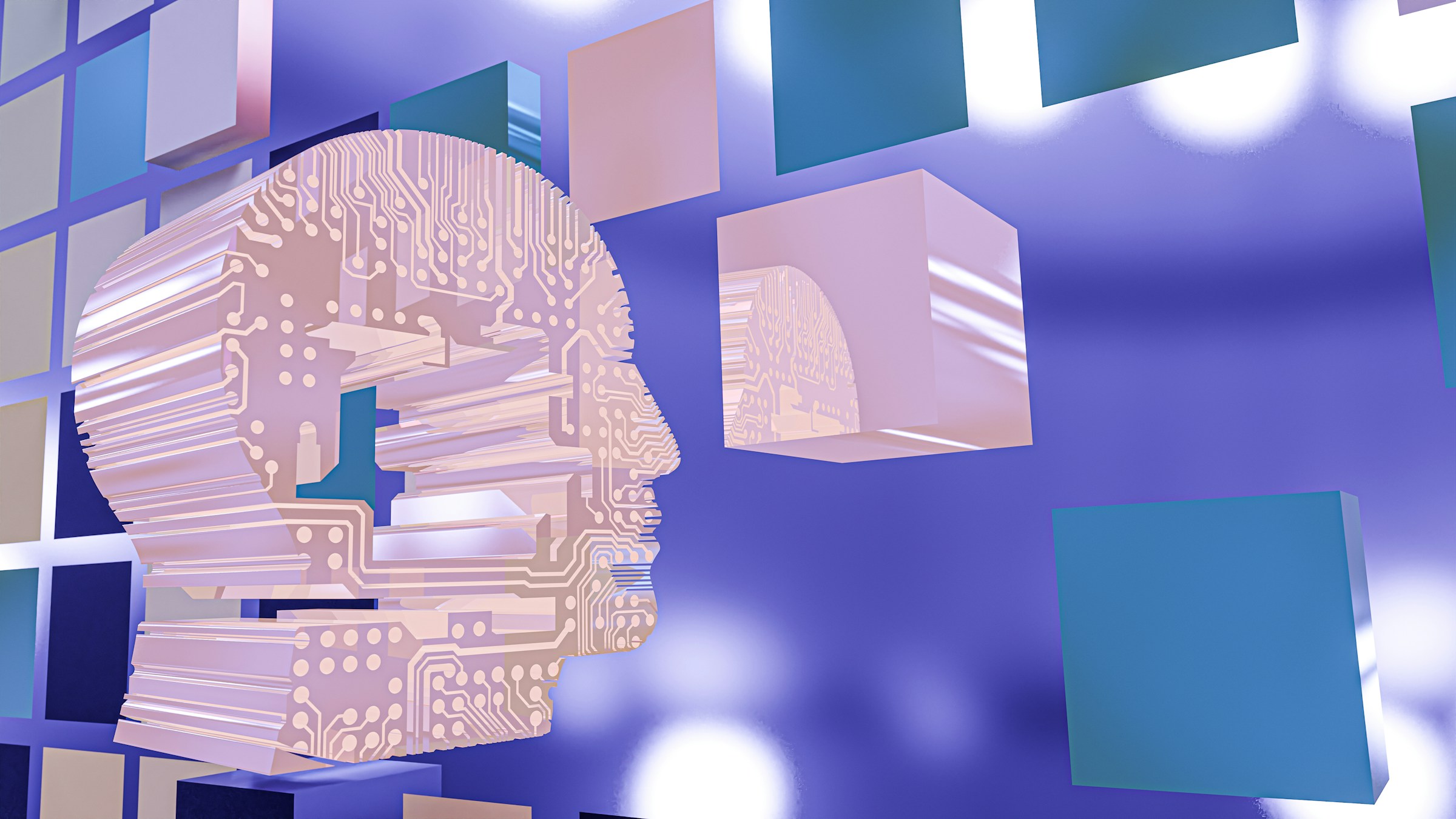Content
Consider you're at a job interview. You've aced all the questions from the human interviewer. But then you have to answer a few more questions from an AI. The next day, you learn you still need to get the job. Instead, the AI determined that you were unqualified for the position because of an inherent bias. This scenario is close to reality. As AI agents increasingly help organizations make decisions, the potential for bias is a growing concern.
In this guide, we'll look at what bias in AI is, why it happens, and how to reduce bias in AI. By the end, you'll know how to build trustworthy AI systems for your organization. OpenSesame's AI agent infrastructure can help you accomplish this goal. It reduces bias in AI by assisting organizations to create better training data for AI so they can identify and correct for bias before deploying their AI models.
What Is Bias In AI?

Artificial intelligence bias, often called machine learning bias or algorithm bias, occurs when an AI system produces skewed results that are systematically prejudiced against specific individuals or groups. AI bias stems from human prejudices that contaminate training data or the underlying algorithms of AI systems themselves. As a result, AI systems can yield outcomes that reinforce existing societal inequities. If left unaddressed, AI bias can harm an organization’s bottom line and inhibit the ability of certain groups to participate in society and the economy. Bias reduces the accuracy of AI, thereby limiting its potential. Organizations are less likely to reap the benefits of AI systems that produce distorted results.
Furthermore, scandals involving AI bias could increase distrust among marginalized groups, including people of color, women, the LGBTQ community, and people with disabilities. The models on which AI systems are built absorb the biases of society that can be quietly embedded in the mountains of data they're trained on. Historically biased data collection that reflects societal inequity can result in harm to traditionally marginalized groups in use cases, including hiring, policing, credit scoring, and many others. As the use of artificial intelligence becomes more widespread, businesses still struggle to address pervasive bias.
Related Reading
• Trustworthy AI
• AI Problems
• Contextual AI
• AI Decision Making
Risks of Bias In AI

Discrimination and Inequality: AI Systems Can Amplify Biases Already Present in Society
AI models learn from data; if that data contains biases, the AI will replicate them in its decision-making. This can lead to discriminatory outcomes that reinforce existing inequalities. For example, biased hiring algorithms might favor specific demographics over others, leading to unfair employment practices.
Lack of Fairness: How AI Bias Can Create Unjust Outcomes
Biased AI can produce unfair decisions, especially in high-stakes areas like healthcare, lending, and law enforcement. This can disadvantage certain groups based on race, gender, socioeconomic status, or other factors.
Inaccurate Predictions: The Dangers of Flawed AI Models
AI models that rely on biased or incomplete data may produce inaccurate or flawed predictions, which could harm users or fail to provide reliable results in industries like finance or medicine.
Loss of Trust: The Impact of AI Bias on Societal Perception
As AI systems become more integrated into society, biased outcomes can erode trust in AI technologies. If people see AI as unfair or discriminatory, it may hinder wider adoption and use, especially in sectors where fairness and transparency are critical.
Reinforcement of Historical Biases: How AI Can Perpetuate Inequality
If AI systems are trained on historical data, they can perpetuate historical inequalities. For instance, biased law enforcement data could cause predictive policing systems to target specific communities, continuing cycles of discrimination unfairly.
Economic Disparities: How AI Bias Worsens Inequality
Bias in AI can worsen economic inequalities by giving certain groups privileged access. For example, biased loan approval algorithms might disadvantage minority or low-income individuals, creating economic disparities.
Ethical and Legal Risks: The Dangers of AI Bias
AI bias poses ethical dilemmas and could lead to legal challenges, especially in industries bound by laws against discrimination. Companies could face legal action or reputational damage if their AI systems lead to biased outcomes.
Types of Bias In AI

Selection Bias: The Dangers of Unrepresentative Datasets
Selection bias occurs when the data used to train an AI system does not represent the reality it's meant to model. It can happen for various reasons, such as incomplete data, biased sampling, or other factors leading to an unrepresentative dataset. For example, if a model is trained on a dataset that only includes male employees, it cannot accurately predict female employees' performance.
Confirmation Bias: When AI Reinforces Our Prejudices
This type of bias happens when an AI system is tuned to rely too much on pre-existing beliefs or trends in the data. This can reinforce existing biases and fail to identify new patterns or trends.
Measurement Bias: The Dangers of Inaccurate Data
This bias occurs when the data collected differs systematically from the actual variables of interest. For instance, if a model is trained to predict students' success in an online course, but the data collected is only from students who have completed the course, the model may not accurately predict the performance of students who drop out.
Stereotyping Bias: How AI Can Reinforce Harmful Assumptions
Stereotyping bias happens when an AI system reinforces harmful stereotypes. An example is when a facial recognition system is less accurate in identifying people of color or when a language translation system associates specific languages with certain genders or stereotypes.
Out-Group Homogeneity Bias: When AI Sees Groups, Not Individuals
Out-group homogeneity bias occurs when an AI system is less capable of distinguishing between individuals not part of the majority group in the training data. This may result in misclassification or inaccuracy when dealing with minority groups.
7 Tips On How To Reduce Bias In AI Effectively

1. Leverage OpenSesame.dev to Reduce Bias In AI
OpenSesame.dev offers a unique AI agent infrastructure software that grounds AI models in reality. The platform helps reduce bias, especially those linked to AI-generated hallucinations. OpenSesame.dev lowers hallucination rates, enhances the reliability of AI outputs, and saves hours of manual checking. Key features include real-time hallucination reports, business data integration, multimodal AI expansion, and open-source frameworks.
The platform provides ungrounded truth recognition, prompt template extraction, accuracy scoring, and a hallucination dashboard. OpenSesame allows businesses to confidently build trustworthy AI systems, offering real-time insights without latency for high-performing, reality-grounded AI solutions.
2. Spot Potential Sources of Bias
To reduce bias in AI, first, examine the data. Start by identifying the different forms of bias that could affect it. Ask yourself if you selected the data without bias. Check for any bias arising from errors in data capture or observation. Ensure you aren't using a historical data set tainted with prejudice or confirmation bias. This process can help to identify and eliminate bias.
3. Set Guidelines and Rules for Eliminating Bias
Next, organizations should set guidelines, rules, and procedures for identifying, communicating, and mitigating potential data set bias to keep bias in check. Forward-thinking organizations document cases of bias as they occur, outlining the steps taken to identify bias and the efforts made to minimize it. By establishing these rules and communicating them openly and transparently, organizations begin to address machine learning model bias issues.
4. Identify Accurate Representative Data
Before collecting and aggregating data for machine learning model training, organizations should first try to understand what a representative data set would look like. Data scientists must use their data analysis skills to understand the population to be modeled and the data characteristics used to create the machine learning model. These two things should match to build a data set with as little bias as possible.
5. Document and Share How Data is Selected and Cleansed
Many forms of bias occur when selecting data from among large data sets and during data cleansing operations. Organizations should document their data selection and cleansing methods to ensure that a few bias-inducing mistakes are made. They should also let others examine the models for any form of bias. Transparency allows for root cause analysis of sources of bias to be eliminated in future model iterations.
6. Screen Models for Bias as Well as Performance
Machine learning models are often evaluated before being placed into operation. Most of the time, these evaluations focus on accuracy and precision when judging model performance. However, organizations should also add measures of bias detection in these evaluations. Even if the model performs with acceptable accuracy and precision for particular tasks, it could fail on bias measures, which might point to issues with the training data.
7. Monitor and Review Models in Operation
Finally, there's a difference between how the machine learning model performs in training and the real world. Organizations should provide methods to monitor and continuously review the model's operational performance. If there are signs of bias, the organization can take action before it causes irreparable harm.
Why Reducing Bias In AI Is Important

Understanding the Mechanism of Bias in AI
Any AI system you build will be a reflection of the data you use to train it. The better the quality of the data, the better the AI. However, when data has a human bias or bias from insufficient or unbalanced data, the AI will inherit those issues and produce unsatisfactory and potentially harmful outcomes. Moreover, even if you don’t see any indications of bias in the AI’s results, it may still hide problematic discrepancies that could cause serious issues. It’s critical to understand how bias creeps into AI systems so you can eliminate it from your processes.
Why Reducing Bias in AI Is Important
The potential of machine learning comes from its ability to learn from data and apply that learning experience to new data that a system has never seen before. However, one of the challenges data scientists have is ensuring the data fed into machine learning algorithms is clean, accurate, and—in the case of supervised learning—well labeled and free of any inherently harmful biased data that could skew machine learning results.
The potential of supervised learning, one of the core approaches to machine learning, depends heavily on the quality of the training data. So, it should be no surprise that when biased training data is used to teach these systems, the results are biased AI systems. Implementing biased AI systems can cause problems, mainly in automated decision-making systems, autonomous operations, and facial recognition software to make predictions about or render judgment on individuals.
Some notable examples of the bad outcomes algorithmic bias has caused include a Google image recognition system that offensively misidentified images of minorities, automated credit applications from Goldman Sachs that sparked an investigation into gender bias, and a racially biased AI program used to sentence criminals.
The Implications of AI Bias
These kinds of mistakes can hurt individuals and businesses in the following ways:
Biased facial recognition technology can lead to false assumptions and accusations about customers and other business-related individuals. It can also be the source of embarrassing or mistaken marketing messages.
Bias blunders can lead to reputational and subsequent financial harm.
Organizations can be over- or undersupplied with raw materials or inventory because of poor customer demand forecasts.
Mistakes can lead to low trust in machine learning and resistance to AI adoption.
Inaccurate classifications of people can lead to unfair denials of applications for loans, credit, and other benefits, resulting in problems with regulatory laws and compliance rules.
Enterprises must be hypervigilant about machine learning bias: Efficiency and productivity value delivered by AI and machine learning systems will be wiped out if the algorithms discriminate against individuals and subsets of the population.
However, AI bias isn't limited to discrimination against individuals. Biased data sets can jeopardize business processes when applied to objects and data of all types. For example, take a machine learning model trained to recognize wedding dresses. If the model were trained using Western data, wedding dresses would be categorized primarily by identifying shades of white. This model would fail in non-Western countries where colorful wedding dresses are more commonly accepted. Errors also abound where data sets had a bias regarding the time of day when data was collected, the condition of the data, and other factors.
All of the examples described above represent some bias introduced by humans as part of their data selection and identification methods for training the machine learning model. The systems technologists build are necessarily colored by their own experiences. As a result, they must be aware that their biases can jeopardize the quality of the training data. Individual bias, in turn, can quickly become systemic bias as dire predictions and unfair outcomes become part of the automation process.
OpenSesame: The Hallucination Monster Slayer
OpenSesame offers innovative AI agent infrastructure software that grounds AI models in reality. Our platform reduces hallucinations, enhances reliability, and saves hours of manual checking. Key features include real-time hallucination reports, business data integration, multimodal AI expansion, and open-source frameworks.
We provide ungrounded truth recognition, prompt template extraction, accuracy scoring, and a hallucination dashboard. OpenSesame allows businesses to confidently build trustworthy AI systems, offering real-time insights without latency for high-performing, reality-grounded AI solutions. Try our AI agent infrastructure management software for free today!
Related Reading
• How Can AI Help My Business
• Challenges of AI
• Model Evaluation Metrics
• Unpredictable AI
• Challenges of AI
How To Detect Bias In AI

Data Analysis: Digging Into AI Training Data for Signs of Bias
Evaluating the data used to train AI systems is one of the most effective ways to detect bias. Any imbalance or unfairness in that data will often lead to corresponding issues in the model’s decision-making. There are many ways to analyze data for signs of bias. They include descriptive statistics, data visualization, quality assessment, and sampling.
Algorithm Analysis: Inspecting the Code Underlying AI Systems
Algorithm analysis involves investigating algorithms using AI systems to identify bias. Even when training data appears to be free of bias, the code that governs AI decision-making can introduce problems. Algorithm analysis can include code review, algorithm testing, algorithm auditing, and algorithm explainability.
Human Analysis: Getting Feedback from Real People
AI systems are designed to mimic human decision-making and behavior. Therefore, getting feedback from actual humans on the outputs generated by AI systems is critical. Human analysis can involve surveys, interviews, focus groups, and user testing.
Context Analysis: Understanding the Situation Where AI Will Be Deployed
Bias can manifest in different ways depending on the context. For example, an AI system that predicts criminal recidivism may produce very different outputs when deployed in a rural county versus an urban county. Understanding the nuances of the deployment situation can help identify potential sources of bias. Context analysis can include scenario analysis, impact assessment, ethical review, and legal compliance.
Try Our AI Agent Infrastructure Management Software for Free Today
OpenSesame offers innovative AI agent infrastructure software that grounds AI models in reality. Our platform reduces hallucinations, enhances reliability, and saves hours of manual checking. Key features include real-time hallucination reports, business data integration, multimodal AI expansion, and open-source frameworks.
We provide ungrounded truth recognition, prompt template extraction, accuracy scoring, and a hallucination dashboard. OpenSesame allows businesses to confidently build trustworthy AI systems, offering real-time insights without latency for high-performing, reality-grounded AI solutions. Try our AI agent infrastructure management software for free today!
Related Reading
• How to Improve Machine Learning Model
• AI Decision Making Examples
• How to Build an AI agent
• AI Agent Examples
• AI Agent Frameworks





